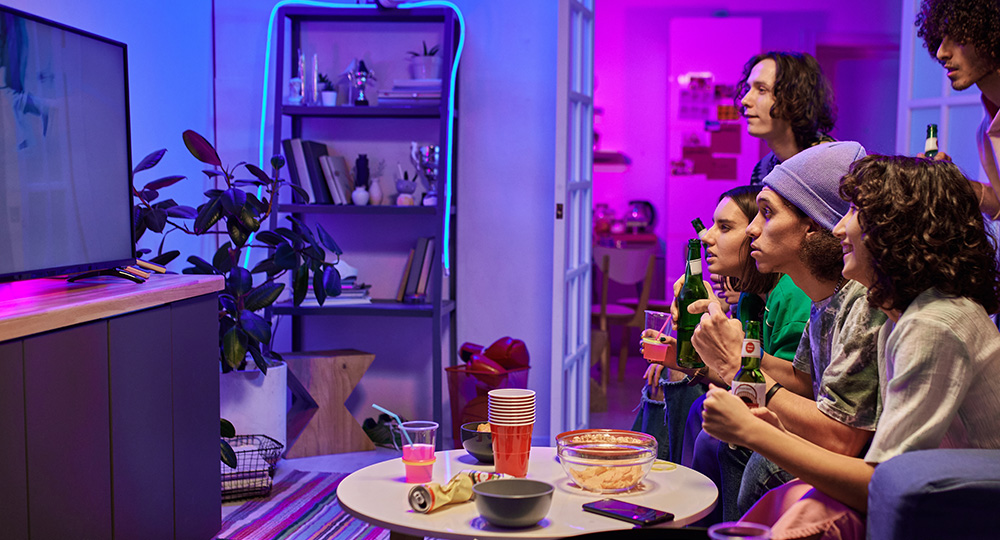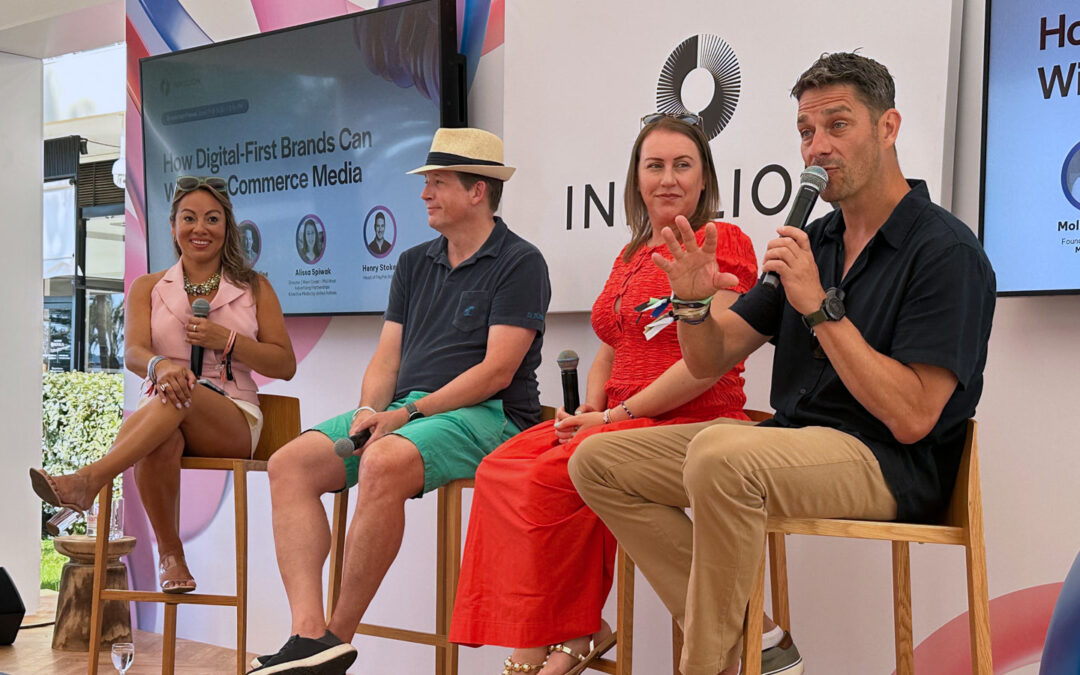From Seamless Shopping to Multicultural Media, 5 Strategies for Engaging Gen Z Through CTV

This article was originally published on The Drum.
Parents of teens and young adults will be all too familiar with this scene: you settle in at home to watch an episode of Bel-Air or The Office or even the latest Marvel full-length movie with a member of Gen Z. A shared experience! But their eyes are on more than one screen: TikTok scrolling with breaks for an Instagram check, and maybe even an alert that it’s time to BeReal. Then there are the Snaps, texts, incoming and outgoing selfies, emojis and audio.
Let’s take a pause for a collective eye roll and then consider the opportunity for marketers: the future of media engagement is unfolding in our living rooms. Despite what looks like a chaotic, disruptive viewing experience to many, Gen Zers manage multiple media streams simultaneously and still take in most of what’s going on (we think)!
They expect media to be participatory and expect this experience to become even more frictionless. Simply sitting there and watching doesn’t cut it. A generation that has come of age enjoying social shopping, one-click buying, digital wallets and, unfortunately, Zoom schooling, is accustomed to living their lives on and through screens.
It won’t be the first time those in the TV ad business tried to bring interactivity to TV screens. Remember those interactive ads on TiVo in the early 2000s? We’re past that, and now we can look to our kids to finally nudge the industry along.
With lessons from my daughter, queen of multi-verse bingeing, here are five ways that marketers can embrace a Gen Z audience – while helping to make TV advertising resonate with a new generation of viewers:
Yes, the QR Codes Work
Since the phone has become an appendage, my teen is a lot faster on the take to scan a QR code when it pops up on the big screen – assuming that the creative message is compelling enough for her to take action. If she sees “scan for Bogo code at Aerie,” she’s all in.
For marketers, the opportunity is evident. A QR code appears on a TV screen, is scanned with a phone and can send a viewer directly to a one-click purchase site. Not to mention that every step is measured with precision for the advertiser. Attribution magic.
The message here for brands: make it easy. Incorporating digital QR codes on big-screen ads reduces the purchase funnel for consumers to buy tacos, sneakers, movie tickets, you name it, via their small screen.
Make Checkout and Wallet Management Simple
When was the last time you saw a Gen Zer whip out cash to buy anything (other than your cash)? They are among the early adopters of cashless and cardless consumption, using mobile payments for most of their transactions.
Beyond QR codes, the tech for shoppable connected TV (CTV) has a ways to go before gen Z will jump on board. Anything that requires credit card inputs creates friction in a system, especially for younger consumers who have grown up with the ease of Instagram shopping.
Bake Shopping into Shows
Of course, with streamlined payment logistics, Gen Z needs something to buy, and it won’t be from QVC. But imagine they could snag a favorite football player’s jersey during a game. Again, this kind of shopping has to be simple – and somewhat centralized. Studios are increasingly exploring ways to build this functionality during show development.
As the ad community continues to build out this offering, it needs to settle on a few standard forms of shopping ad units. It shouldn’t be difficult: partner with studios early, connect streaming ads with products in shows, incorporate interactivity within ad units and make ‘add-to-cart’ a one-tap solution.
Help Them Use Their Voices
Gen Z has not only been raised with multiple screens, but they’ve also become accustomed to asking Alexa or Siri for help with tasks large and small.
Voice is an easy way to incorporate all sorts of interactivity into TV ads – and Gen Z can lead the way. Amazon is already experimenting with voice-enabled add-to-cart TV spots.
Acknowledge Multicultural Groups
A multicultural ad strategy shouldn’t be an afterthought for brands. Gen Z is defined by and embraces diversity – look no further than the massive popularity of a Spanish-language artist like Bad Bunny. This group expects marketing efforts from brands to encourage toggling between languages and cultures. Creative and adtech can easily offer options in how – and in what language – they choose to receive messages.
The sooner the ad industry recognizes and channels the behavioral shifts steered by Gen Z, the faster CTV will live up to its interactive promise for all generations, with advertising that’s far more effective and engaging. And you might even get your teenager to watch TV with you.
H/T Elena Carone.
Subscribe to our blog:
Related Posts:

The Consumer-First Approach To Commerce Media Network Success
Your airline is an ad platform now – and so is your bank. Commerce media networks are one of the most interesting areas of growth in advertising, and at Cannes Lions, plenty of them were onsite to talk about it. That’s a conversation that we explored at the Infillion...

Why Neurodiversity Will Lead The Way In The AI Era
One in five employees today identifies as neurodivergent – as having autism, ADHD, dyslexia, or other cognitive variations – and that’s only going to grow. According to research from ZenBusiness, fully half of Gen-Z identifies with neurodivergence on some level....

How Digital Out-Of-Home Is Turning Up The Volume At Music Festivals
If you have attended a music festival sometime in the past 20 years, you’ve probably wasted at least 5 minutes holding your phone above your head, trying to get even the slightest bit of signal with little success. The sheer number of electronic devices in the area...
Let's Connect
We can help you create the personalized ad experiences viewers expect.

